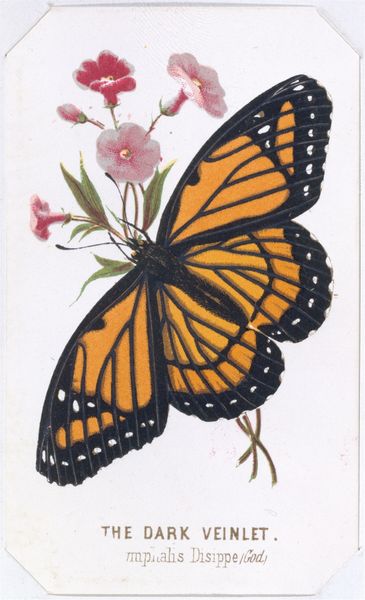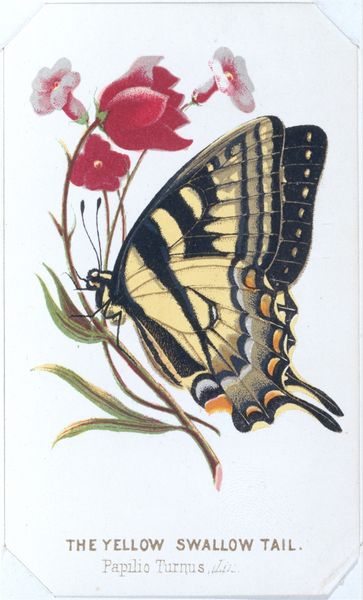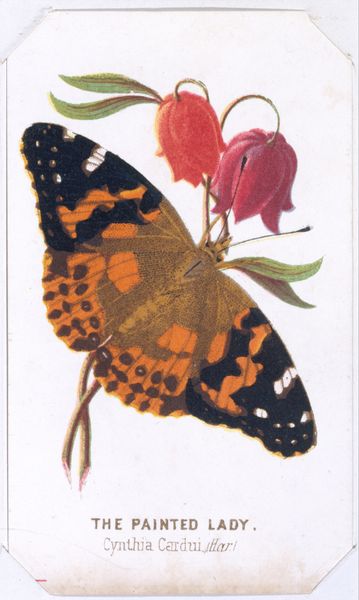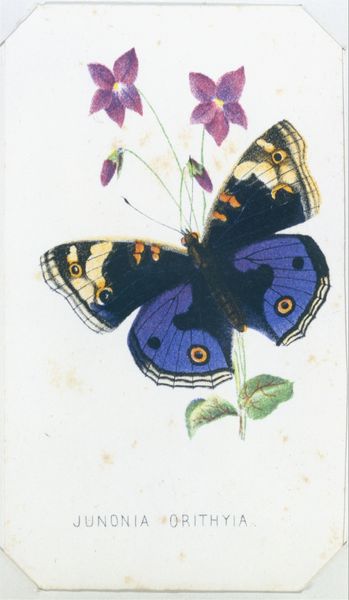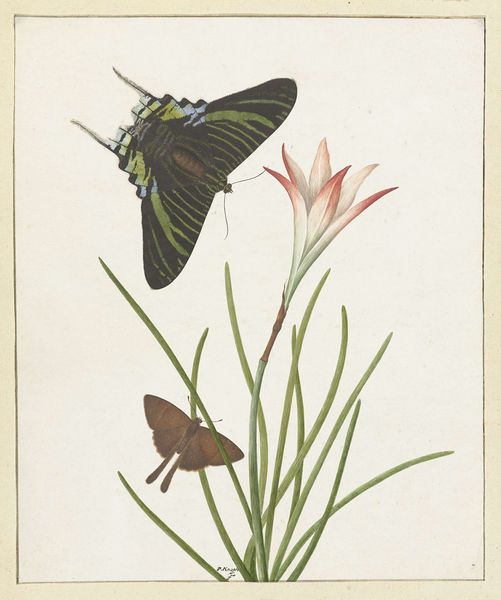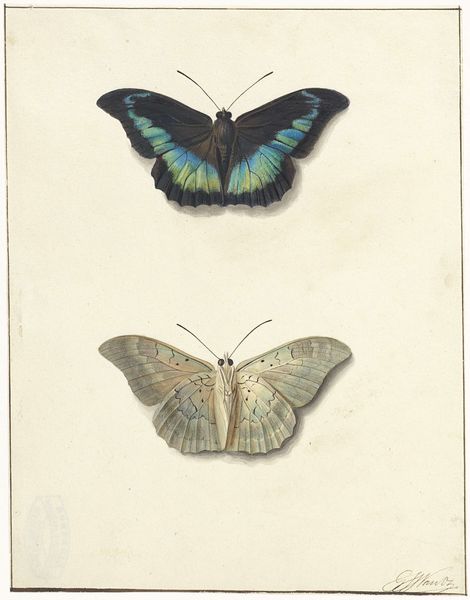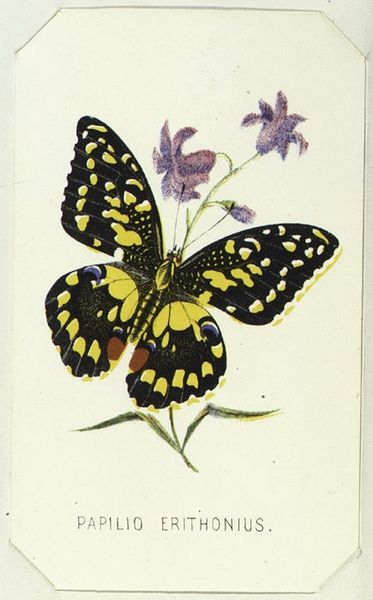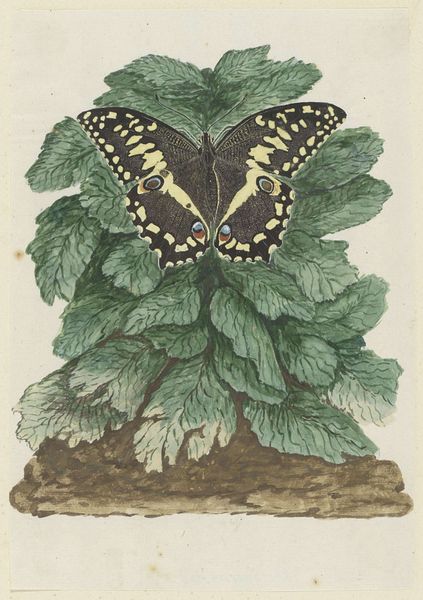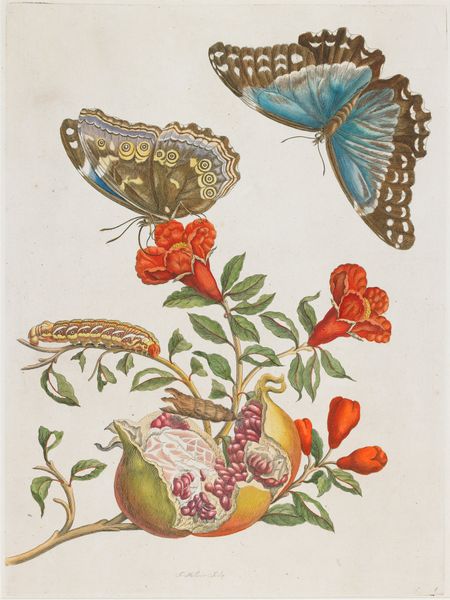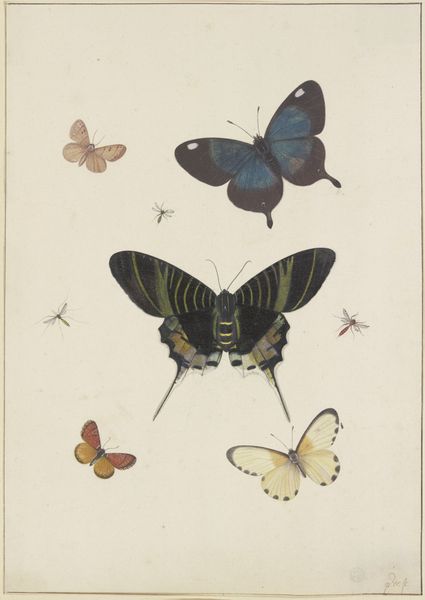
The Black Swallowtail from The Butterflies and Moths of America Part 3 1862
0:00
0:00
drawing, print, etching, watercolor
#
drawing
# print
#
impressionism
#
etching
#
ukiyo-e
#
watercolor
#
watercolour illustration
#
nature
#
botanical art
#
watercolor
#
realism
Dimensions: sheet: 4 x 2 3/8 in. (10.2 x 6.1 cm)
Copyright: Public Domain
Editor: Here we have *The Black Swallowtail* from *The Butterflies and Moths of America Part 3*, a print from 1862 attributed to Louis Prang & Co., currently housed at The Met. It's fascinating how such detailed forms emerge from what seems like etching and watercolor. The butterfly dominates the composition; it's strikingly beautiful. What strikes you most about it? Curator: Immediately, it's the compositional balance achieved through the strategic placement of colour and form. The butterfly, boldly presented, is counterweighted by the softer hues of the flower. Notice the repetition of curved lines, echoing across the wings and petals, creating a harmonious visual rhythm. How do you read the texture? Editor: The texture seems almost implied, like a memory of texture rather than a true rendering. Is that typical of prints from this period? Curator: The apparent flatness enhances the symbolic weight of the image. Observe the precise delineation of each segment of the butterfly's wings, the controlled gradations of colour. The artist employs a clear visual language, moving us toward symbolic interpretation rather than mimetic representation. Note also that the background white does not seem blank. It provides as much contrast to the elements as its shape does. What message do you think Prang wanted to convey to the viewer? Editor: Perhaps it's a statement on the delicate balance of nature? The beauty, but also fragility, of the butterfly? I guess there's both art and science mixed in, too, which gives the whole thing its appeal. Curator: Indeed. This image prompts questions about the function of botanical illustration in scientific advancement but also artistic composition. This is a work that benefits from detailed observations of form. Editor: I now notice the care put into depicting what might have been simple colour choices and shapes, but everything in it seems more connected now. Thanks for breaking down all of the elements so clearly!
Comments
No comments
Be the first to comment and join the conversation on the ultimate creative platform.
